When shopping for baby clothes, parents may come across the terms “1T” and “12 months” and wonder if they are the same size. While both sizes are intended for babies around one year old, there are some differences between the two. Understanding these differences can help parents choose the right size for their little ones.
One of the main differences between 1T and 12-month sizes is the way they are measured. 1T is typically based on height, while 12-month sizes are based on weight. This means that a baby who is tall but thin may fit better in a 1T size, while a shorter but heavier baby may fit better in a 12-month size.
It’s important to keep in mind that every baby is different, and measurements can vary widely even among babies of the same age.
Key Takeaways
- 1T and 12-month sizes are both intended for babies around one year old, but there are some differences between the two.
- 1T sizes are typically based on height, while 12-month sizes are based on weight.
- It’s important to measure your baby carefully and consider their individual proportions when choosing clothing sizes.
Understanding Baby and Toddler Clothing Sizes
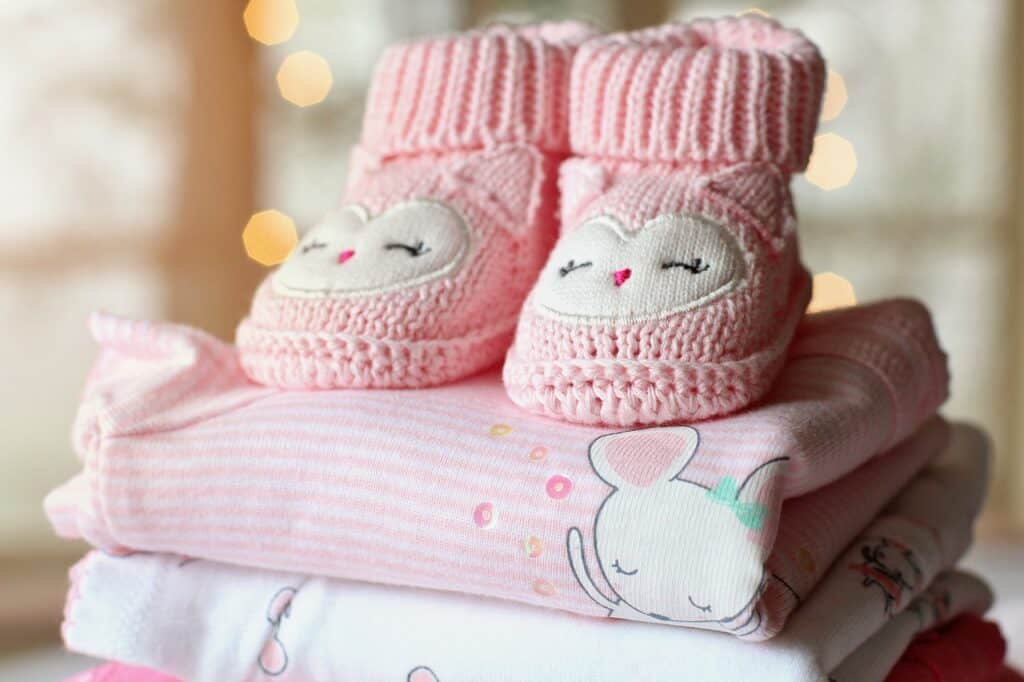
When it comes to buying clothes for babies and toddlers, it can be confusing to understand the different sizes available. It’s important to keep in mind that baby and toddler clothing sizes are typically based on the child’s age, weight, and height.
Newborn sizes are designed for babies who weigh between 5 and 8 pounds and are up to 21 inches long. Preemie sizes are for babies who are born prematurely and are smaller than the average newborn.
After the newborn stage, baby clothing sizes are based on age. For example, 3-6 months is designed for babies who are 3 to 6 months old and weigh between 12 and 17 pounds. 6-9 months is designed for babies who are 6 to 9 months old and weigh between 17 and 21 pounds. 9-12 months is designed for babies who are 9 to 12 months old and weigh between 21 and 25 pounds.
Toddler clothing sizes are based on the child’s age and height. 2T is designed for toddlers who are 2 years old and are approximately 33-36 inches tall. 3T is designed for toddlers who are 3 years old and are approximately 36-39 inches tall. 4T is designed for toddlers who are 4 years old and are approximately 39-42 inches tall. 5T is designed for toddlers who are 5 years old and are approximately 42-45 inches tall.
It’s important to note that 1T is not a standard clothing size and is not the same as 12 months. The term 1T is sometimes used to refer to clothing that is designed for toddlers who are transitioning from 12-18 months to 2T. However, this is not a universal size and can vary between brands.
When shopping for baby and toddler clothes, it’s important to check the size chart provided by the brand to ensure the best fit for your child. Keep in mind that every child is different and may not fit perfectly into the standard size chart. It’s always a good idea to try on clothes before purchasing to ensure the best fit.
The 1T and 12-Month Size Comparison

When it comes to baby clothing sizes, parents often wonder if 1T is the same as 12 months. The answer is not straightforward, as it depends on the brand and the baby’s size and weight. However, there are some general guidelines that can help parents make an informed decision.
1T stands for “Toddler,” and it typically refers to clothing for children who are between 12 and 24 months old. On the other hand, 12 months is a specific age range, usually referring to babies who are 9 to 12 months old. Therefore, 1T clothing may be slightly bigger than 12-month clothing, as it is designed to fit toddlers who are more mobile and have a bigger body frame than infants.
To compare the 1T and 12-month sizes, parents can look at the measurements provided by the clothing brand. Most brands have a size chart that lists the height, weight, and chest circumference of babies for each size. By measuring their baby and comparing it to the size chart, parents can determine whether their baby fits better in 1T or 12-month clothing.
It’s also important to note that some brands may use different sizing systems, such as S, M, L, or 6M, 9M, 12M, etc. Therefore, parents should always check the size chart and not rely solely on the label.
In conclusion, while 1T and 12-month sizes may overlap, they are not the same, and parents should always check the size chart to ensure a proper fit. By doing so, they can avoid uncomfortable clothing that is too tight or too loose and ensure their baby is comfortable and happy.
The Importance of Measurements in Sizing

Accurate measurements are crucial when it comes to determining the correct size for clothing. Whether it’s weight, height, waist, or other measurements, it’s essential to use accurate data to ensure the best fit. This is particularly important when shopping online, where it’s not possible to try on the clothes before purchasing.
Sizing charts are typically used to help determine the correct size, but they can vary between brands and even between different styles within the same brand. It’s important to check the sizing chart for each individual item before making a purchase.
When it comes to baby clothes, size charts are even more critical. Babies grow and develop at different rates, so it’s important to measure them regularly to ensure that they are wearing the correct size. A baby clothes size chart can help parents and caregivers ensure that their little ones are comfortable and safe in their clothing.
In addition to using accurate measurements, it’s also important to consider the fit of the clothing. Some styles of clothing may be designed to fit more loosely or tightly than others, so it’s important to take this into account when choosing a size.
Overall, accurate measurements are essential when it comes to sizing clothing. By using the correct measurements and checking the sizing chart for each individual item, shoppers can ensure that they are getting the best fit possible.
Influence of Developmental Milestones on Clothing Size
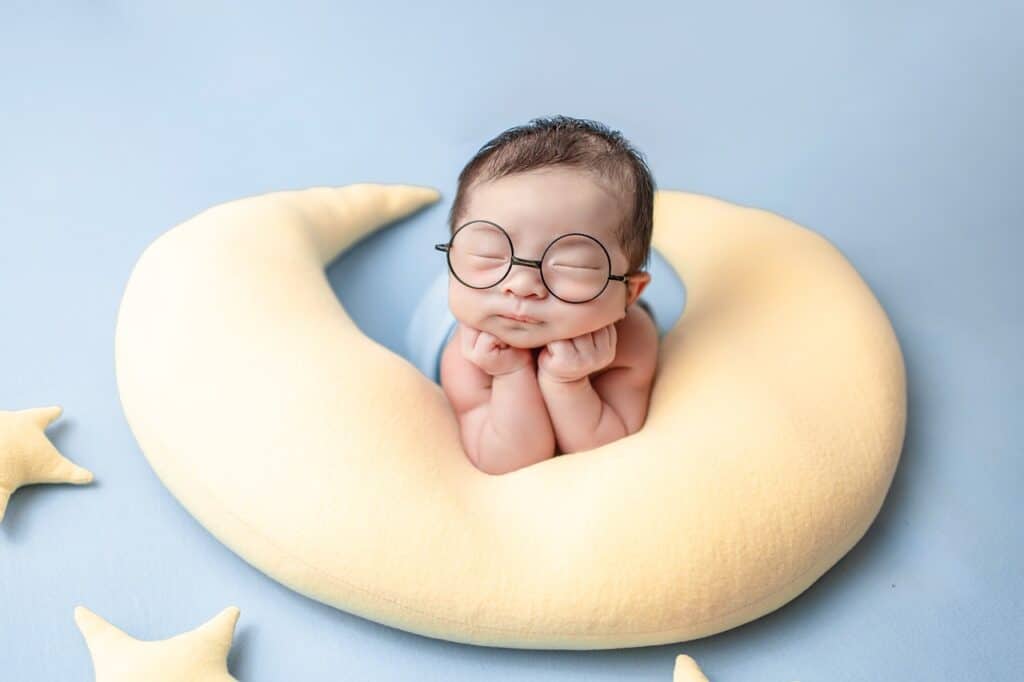
Developmental milestones such as walking, crawling, and being potty trained can have a significant impact on a child’s clothing size. As children grow and develop, their bodies change, and they require different sizes and styles of clothing to accommodate their needs.
When a child begins to walk, they may require larger shoe sizes to support their growing feet. Additionally, their clothing may need to be adjusted to allow for more movement and flexibility. Clothes that are too tight or restrictive can hinder a child’s ability to move and explore their environment, which can be detrimental to their development.
Crawling is another milestone that can affect a child’s clothing size. As a child crawls, their knees and elbows may become red and irritated from friction with the ground. Clothing that is too tight or rough can exacerbate this issue, so it is important to choose clothing that is soft and comfortable.
Being potty trained is yet another milestone that can impact a child’s clothing needs. Children who are potty trained may require clothing that is easier to put on and take off, such as pants with elastic waistbands or dresses with simple closures. This can make it easier for them to use the bathroom independently and build confidence in their abilities.
In conclusion, developmental milestones such as walking, crawling, and being potty trained can have a significant influence on a child’s clothing size and needs. It is important to choose clothing that is appropriate for their stage of development and allows them to move, explore, and learn comfortably and confidently.
Brand Differences in Sizing
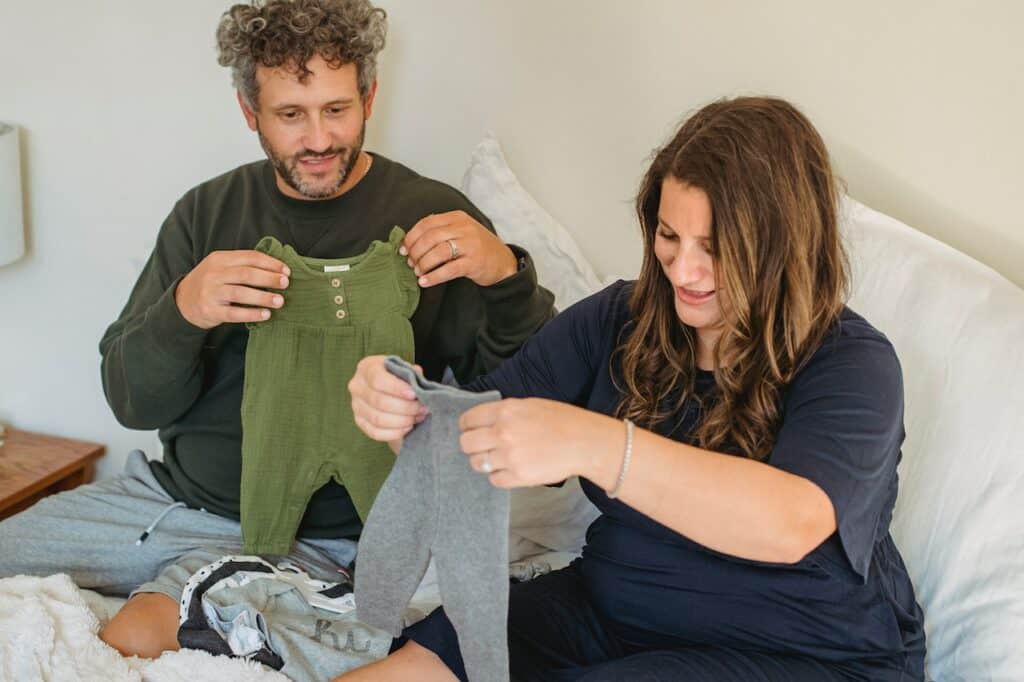
When it comes to baby clothing, there are many different brands to choose from. However, not all brands size their clothing the same way. This can make it difficult for parents to know what size to buy for their little ones.
Some brands may run larger or smaller than others, which can be frustrating for parents who are trying to find the right fit for their child. It’s important to keep in mind that each brand has its own unique sizing chart, so it’s always a good idea to check the size chart before making a purchase.
One thing to keep in mind is that some baby clothing brands may cater to a specific body type. For example, some brands may be better suited for babies with a leaner build, while others may be better for babies with a more round or chubby build. It’s important to keep this in mind when choosing a brand, as it can affect the fit of the clothing.
Another factor to consider is the quality of the clothing. While some brands may be more affordable, they may not be made with the same high-quality materials as more expensive brands. This can affect the fit and durability of the clothing, so it’s important to choose a brand that offers both quality and affordability.
Overall, there are many different factors to consider when choosing a baby clothing brand. By doing some research and checking the sizing chart before making a purchase, parents can ensure that they are getting the right fit for their little one.
Understanding Size Overlap
When it comes to measuring time, there are different units that can be used. Two of the most common units are 1t and 12 months. While they may seem similar, there are important differences between them.
1t is short for “terrestrial year” and is the time it takes for the Earth to complete one orbit around the sun. It is approximately 365.24 days long. On the other hand, 12 months is a unit of time based on the Gregorian calendar, which has 12 months of varying lengths. In total, there are 365.2425 days in a year on average.
Due to this difference, 1t and 12 months do not align perfectly. There is a size overlap between them, meaning that one unit is slightly larger than the other. Specifically, 1t is about 0.006% longer than 12 months.
This size overlap can be important in various contexts. For example, when calculating interest rates or investment returns, it can make a difference whether the time period is measured in 1t or 12 months. It can also affect scientific calculations and data analysis.
It is important to keep in mind that while 1t and 12 months are not exactly the same, they are still useful units of time. Depending on the context and the level of precision required, one unit may be more appropriate than the other.
In summary, understanding the size overlap between 1t and 12 months is important when working with time measurements. While they are not identical, they are both useful units of time that can be used in different situations.
Comfort and Style in Baby Clothing
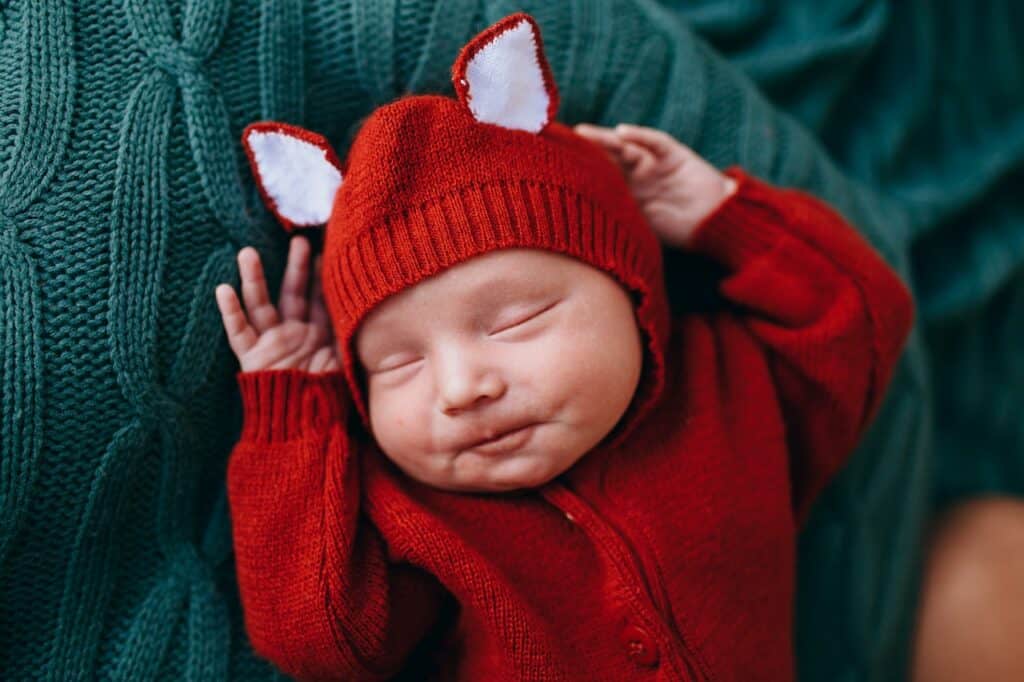
When it comes to baby clothing, parents often prioritize comfort over style. However, with the right fabrics and designs, it’s possible to have both.
Soft, breathable fabrics like cotton and bamboo are ideal for baby clothing, as they are gentle on sensitive skin and allow for airflow to prevent overheating. Additionally, stretchy fabrics like spandex or elastane can provide a comfortable fit without restricting movement.
In terms of style, there are many options available for baby clothing. From cute and playful designs to more sophisticated looks, parents can choose clothing that reflects their personal style. Bold colors and patterns can add a fun element to baby’s wardrobe, while neutral tones can create a timeless, classic look.
When choosing baby clothing, it’s important to consider both comfort and style. By selecting clothing made from soft, breathable fabrics and incorporating playful or sophisticated designs, parents can create a wardrobe that is both comfortable and stylish for their little one.
Diaper Changes and Clothing Size
When it comes to babies, diaper changes and clothing size are two important factors that parents need to keep in mind. While it may seem like a simple task, many parents struggle with determining the right diaper size and clothing size for their little ones.
One of the most important things to keep in mind when it comes to diaper changes is that a baby’s diaper size will change as they grow. It is important to make sure that the diaper fits snugly around the baby’s waist and legs to prevent leaks. A good rule of thumb is to check the baby’s diaper every two to three hours and change it as needed.
As for clothing size, it is important to remember that babies grow quickly in their first year of life. While it may be tempting to buy a lot of clothes in a smaller size, it is better to buy a few outfits in a larger size that the baby will grow into. It is also important to consider the material of the clothing, as some fabrics may shrink after being washed.
Parents should also keep in mind that not all clothing brands size their clothes the same way. It is always a good idea to check the size chart before making a purchase. Additionally, it is important to consider the baby’s weight and height when determining the right clothing size.
In summary, diaper changes and clothing size are important factors to consider when caring for a baby. Parents should make sure that the diaper fits snugly and check it regularly, while also keeping in mind that babies grow quickly and that clothing sizes may vary between brands.
International Sizing Differences

When it comes to clothing sizes, there are many differences between countries. This can make it difficult for consumers to find the right size when shopping internationally. In this section, we will focus on the differences between 1T and 12 months sizing in Europe and the UK.
In Europe, clothing sizes are typically measured in centimeters, while in the UK, they are measured in inches. However, both regions use the same sizing system for babies and toddlers, which is based on age. This means that a 1T size in Europe is equivalent to a 12 months size in the UK.
It’s important to note that European sizing tends to run smaller than UK sizing, so it’s always a good idea to check the measurements before making a purchase. This is especially true if you are shopping online, as different brands may have different sizing standards.
In addition, it’s worth noting that European and UK sizing can vary depending on the brand. For example, a 1T size in one brand may fit differently than a 1T size in another brand. It’s always a good idea to check the brand’s size chart before making a purchase.
Overall, while there are differences in sizing between Europe and the UK, the 1T and 12 months sizes are equivalent. However, it’s important to keep in mind that sizing can vary between brands, so it’s always a good idea to check the measurements and size charts before making a purchase.
Buying Tips for Baby Clothes
When it comes to buying baby clothes, there are a few things that new parents should keep in mind. Here are some tips to help make the process easier:
Finding the Right Size
One of the most important things to keep in mind when buying baby clothes is the size. It’s important to remember that every baby is different and grows at their own pace. Be sure to check the size chart on the clothing item and measure your baby before making a purchase. If you’re unsure about the size, it’s always better to go up a size rather than down.
Footed Pajamas
Footed pajamas are a great option for babies, especially during the colder months. They keep baby’s feet warm and eliminate the need for socks. Look for pajamas with snaps or zippers for easy diaper changes.
Baby Clothing vs. Toddler Clothing
It’s important to remember that baby clothing and toddler clothing are not the same. Baby clothing is designed with the needs of a newborn in mind, while toddler clothing is designed for a more active and mobile child. When shopping for clothes, keep your child’s age and activity level in mind.
Buying Baby Clothes
When buying baby clothes, it’s important to choose items that are comfortable and easy to put on and take off. Look for clothing made from soft, breathable fabrics like cotton. Avoid clothes with too many buttons or zippers, as they can be difficult to manage with a squirming baby.
In conclusion, buying baby clothes can be overwhelming for new parents, but by keeping these tips in mind, it can be a more enjoyable experience. Remember to choose clothes that are comfortable and easy to put on and take off, and always check the size chart before making a purchase.
Closing Thoughts on 1T and 12-Month Sizes
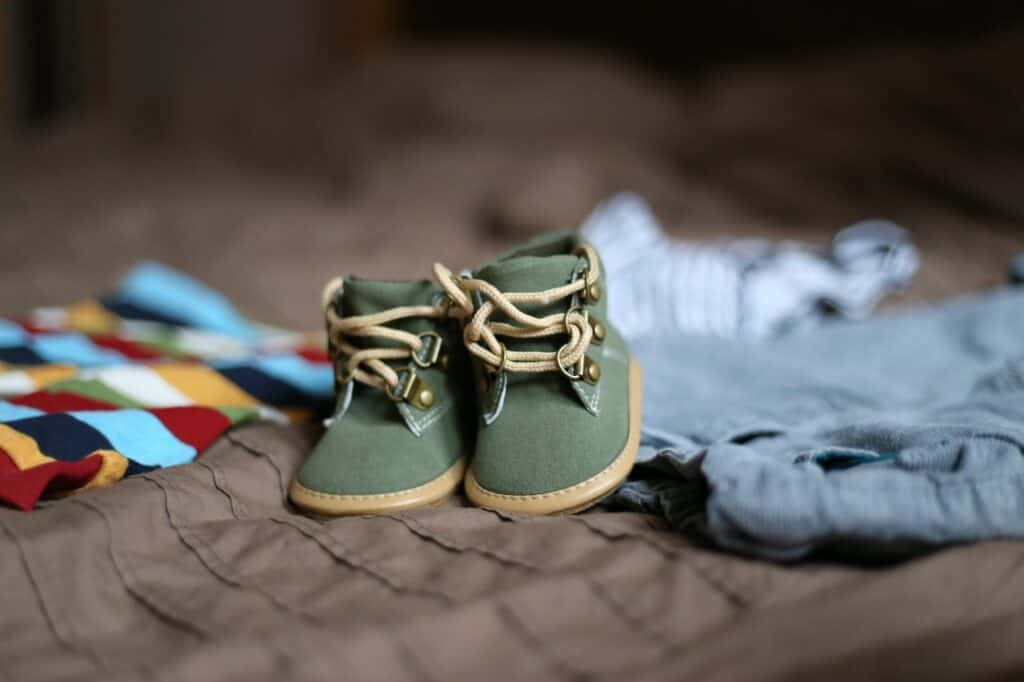
When it comes to baby clothing sizes, there can be confusion about what size to choose for a particular age or weight. One common question is whether 1T is the same as 12 months.
While 1T and 12-month sizes are both intended for babies around 12 months old, they are not exactly the same size. 1T generally refers to clothing for toddlers who are starting to walk and may be a bit taller and leaner than a 12-month-old baby.
It’s important to keep in mind that every baby is different and may not fit perfectly into a particular size based on their age or weight. Some babies may fit into 18-month or 24-month sizes at 12 months old, while others may still fit into 12-month sizes.
When shopping for baby clothes, it’s a good idea to check the size chart provided by the manufacturer and to consider the baby’s weight and height in addition to their age. It’s also helpful to keep in mind that baby clothing sizes can vary between brands, so trying on clothes or checking reviews for sizing information can be helpful.
In summary, while 1T and 12-month sizes are both intended for babies around 12 months old, they are not exactly the same size. It’s important to consider the baby’s individual size and to check the manufacturer’s size chart when selecting clothing.
Frequently Asked Questions
What is the difference between 1T and 12 months?
1T and 12 months are not the same. 1T refers to the size of clothing for toddlers who are around 12-18 months old, while 12 months refers to the age of the child.
Is 1T the same as 24 months?
No, 1T and 24 months are not the same. 24 months refers to the age of the child, while 1T is the size of clothing for toddlers who are around 12-18 months old.
What does 1T size mean?
1T size refers to the size of clothing for toddlers who are around 12-18 months old. The “T” stands for “toddler”.
Is size 1 the same as 12-18 months?
No, size 1 and 12-18 months are not the same. Size 1 refers to the size of clothing for toddlers who are around 9-12 months old, while 12-18 months refers to the age range of the child.
What age is 1T size for?
1T size is generally for toddlers who are around 12-18 months old.
Is 2T the same as 12 months?
No, 2T and 12 months are not the same. 2T refers to the size of clothing for toddlers who are around 18-24 months old, while 12 months refers to the age of the child.

Iesha is a loving mother of 2 beautiful children. She’s an active parent who enjoys indoor and outdoor adventures with her family. Her mission is to share practical and realistic parenting advice to help the parenting community becoming stronger.
